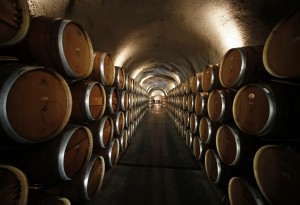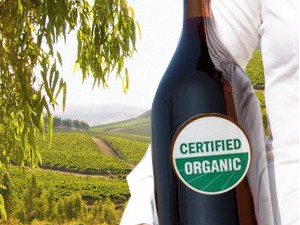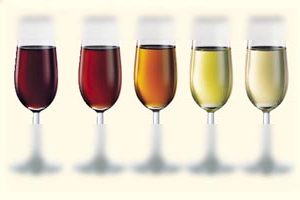Wine Production: Then and Now
People have been making wine for thousands of years. Nowadays it is one of the most popular alcoholic drinks in the world. During this time however the basic techniques for wine production haven’t varied too much. Sure, new processes have been introduced into wine production to refine the flavour, but for the most part it all boils down to a few stages.
As you know, it all starts with grapes on the vine. Let’s run through the process of making wine.
 The first thing about wine production is the harvest of the grapes. Nowadays this is often done mechanically although there are a number of winemakers who still handpick the grapes. The time in which you choose the grapes will have a huge impact on the flavour hence why different wines have different flavours even if they use the same grape. The decision on whether to pick or not will be carried out by the winemaker who will carefully analyse the level of sugar in the grape, how acidic it is as well as the pH of the grape. Other factors may also be brought into play. Once the grapes have been harvested they will have their stems removed before the fermentation process begins.
The first thing about wine production is the harvest of the grapes. Nowadays this is often done mechanically although there are a number of winemakers who still handpick the grapes. The time in which you choose the grapes will have a huge impact on the flavour hence why different wines have different flavours even if they use the same grape. The decision on whether to pick or not will be carried out by the winemaker who will carefully analyse the level of sugar in the grape, how acidic it is as well as the pH of the grape. Other factors may also be brought into play. Once the grapes have been harvested they will have their stems removed before the fermentation process begins.
- The next step of the wine production process is crushing or pressing the grapes. Traditionally this was done by stomping on the grapes but nowadays there are mechanical machines which can do the same job. During the crushing stage the juice of the grape is released from the skin, this creates something known as ‘must’. If a winemaker is aiming to make a white wine they will press this must as quickly as possible to ensure that skins, seeds and other solids do not spend too long in contact with the juice. If they don’t do this then the juice will change colour and it will no longer be a white wine.
- The next step of the process is known as fermentation. This is the conversion of sugar in the must to alcohol. The amount of sugar in the must (and thus the total alcohol content) can depend on a variety of factors. Generally speaking, grapes grown in slightly warmer climates tend to have much higher sugar content and thus produce wines with a lot more alcohol. How long this process takes depends on the grapes which are being fermented. On average it can take anywhere from around two weeks to over a month. It is worth noting that grapes do ferment naturally due to natural yeasts however this does lead to fairly unpredictable results. For this reason many winemakers kill off the natural yeasts and introduce their own. Generally speaking the fermentation process is continued by the winemaker until all of the sugar content has been converted to alcohol. This results in a dry wine. However, using special techniques a winemaker will be able to stop the fermentation process much earlier which will create a sweeter wine.
- The next step in wine production is clarification. This happens when winemakers flip the wine between different tanks and barrels in order to eliminate solids from the mixture. In addition to this, many winemakers carry out filtering and fining. The former helps to remove some or all solids from the mixture whilst the later helps to clarify the wine. Once the wine has been clarified (a process which may take a while) it is then prepared for either bottling or aging.
- The final stage involves either bottling the wine or aging it. Aging can take place in a variety of vessels and can sometimes take a number of years to complete. It really does help improve the flavour however and some of the best red wines available have been aged for long periods of time.
Comparison of New and Old Fashioned Ways in Winemaking
For the most part, there is very little difference between the old ways in winemaking and the new ones. Many people however do argue that Old wine is more in touch with the area that it was created and has its own personality. However creating wine using old world techniques is no longer profitable for producers and thus many of them have placed a heavier focus on producing wines using modern techniques.
In modern wine making a lot of automated processes are used. For example, in modern wine making mechanical harvesting is used which is of course in detriment to using ‘hand selected’ grapes like in the past. This brings down the quality of the flavour a little.
Mechanical wine presses are also used in modern wine making techniques which bring down the quality of the flavour a tad but also allow more wine to be pumped off the production line, something which is important for the commercial viability of the wine.
During fermentation a number of commercial yeasts are used which has an influence on the flavour, although do bring the costs down. More and more winemakers are also using large steel fermentation tanks as opposed to wooden barrels. This means that more wine can be fermented at a time, but none of the character of the wooden barrel is brought into the flavour of the wine.
Wine is still produced in both modern and older styles, although expect to pay a considerable amount more for ‘old world wine’.
What is Organic Wine?
 Organic Wine has recently been increasing in popularity rather drastically, in fact, as of late it has been out pacing the growth of the non-organic wine industry. Currently there are around 2,000 producers of wine in the world and over 900 of these are based in France.
Organic Wine has recently been increasing in popularity rather drastically, in fact, as of late it has been out pacing the growth of the non-organic wine industry. Currently there are around 2,000 producers of wine in the world and over 900 of these are based in France.
It is worth noting that when we refer to Organic Wine we don’t mean it in the same way as other organic products. In order to be classed as an ‘Organic Wine’ the grapes used in the wine need to have been grown in a vineyard completely free of pesticides and chemical preservatives are not used in the growing. This all changes when it gets to the actual fermentation stage however.
The legal definition of what an organic wine actually is varies all over the world. Did you know that wine cannot be classed as organic in Europe at all? The problem comes from the fact that wine matures overtime. The problem is, without adding things to the wine it will not last long at all. The only way in which wine can be preserved is by using non-organic things which go against the idea of organic production. Wines that contain sulphites for preservation are therefore called ‘wine made with grapes farmed organically’. There are a number of wines out there which are made to be truly organic but they aren’t designed to last more than a few years after bottling.
Types of Wine
As you are most likely aware, there are a lot of different types of wine available on the market. All of these wines however can be grouped into six categories. These are white wines, rosé wines, sparkling wines, fortified wines, red wines and dessert wines. These of course can be further split down into sweet wines or dry wines (dependent on the sugar content of the grapes used). Let’s take a little look at the differences in wine types.
 White Wines are mainly made from white grapes as they contain no red pigmentation. However, because the majority of black grapes have a clear juice these are also used in some circumstances. White Wines cater for many different tastes and can be available anywhere from sweet to dry.
White Wines are mainly made from white grapes as they contain no red pigmentation. However, because the majority of black grapes have a clear juice these are also used in some circumstances. White Wines cater for many different tastes and can be available anywhere from sweet to dry.
- Red Wines are made solely from black grapes. As the name suggests, these wines tend to have a red tint however a few of them veer towards being ever so slightly blue. As you are probably aware, most of the juice in grapes is actually clear in colour. This means that the skins of the grapes need to be left on during the fermentation process to help give this type of wine that distinctive tint. As these skins are left on a group of compounds enter the mixture. These compounds are known as ‘tannins’. These are introduced to the mixture by the seeds, skins and small pieces of stem which are left in whilst the red wine is fermenting. Tannins may also be introduced to the mixture when the wine is left to ferment in wooden barrels (can happen to White Wines but it isn’t as common). These tannins help to give the wine a fairly distinct taste which many people have likened to a dry and pucker sensation in the throat and mouth. These tannins also help to preserve the wine which means that the majority of aged wines are red as opposed to white.
- Rosé Wines is a type of wine which is pink in colour. These types of wine are made from black grapes. However the grape skins are removed after a couple of hours from the juice. The pinkish colour comes from some of the pigments from the skin being transferred to the white juice. Since the skins are removed only a few tannins enter the wine. This means that the taste isn’t as ‘dry’ as some red wines, in fact, a great proportion of Rosé wines are actually sweet.
- Sparkling Wines are the fourth category that wines can fall into. These wines can be made from any colour of grape. Their defining feature is that they contain carbon dioxide bubbles. As the wine ferments carbon dioxide occurs naturally however eventually the carbon dioxide bubbles disappear. A number of winemakers however have developed techniques which ensure that the carbon dioxide bubbles get trapped in the wine. Champagne is one of the most famous types of sparkling wine so much so that it has come to be a general term for this category. However, it is worth noting that a wine can only be called champagne if it is made from grapes produced in this region of France. Therefore great deals of sparkling wines aren’t actually champagne.
- Dessert Wines contain a lot of sugar, more so than your traditional sweet wine. They get their name from the fact that many people consume them with a dessert. The sugar content can be increased in a number of different ways and each winemaker has their own special techniques that they use to do so.
- Fortified Wines are wines which have had a spirit added to them during the fermentation process, for example brandy. This means that a lot of sugar is left in the wine and that the wine ends up with its distinctive taste. Fortified Wines last a very long time. Some of the most famous fortified wines are Port and Sherry.
As mentioned previously, most of these wines can be broken down further into ‘Sweet’ or ‘Dry’. Whilst sweet wines have a lot of sugar content in them, Dry Wines tend to have none at all (or very little). Other things can also affect the taste of the wine when it comes to being sweet or dry, this includes the presence of tannins, the acidity of the wine as well as the alcohol content.







